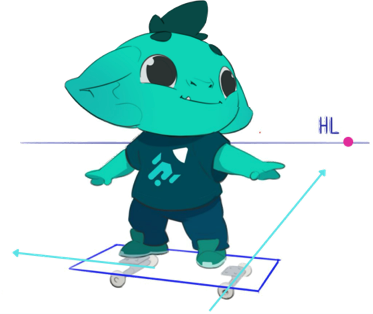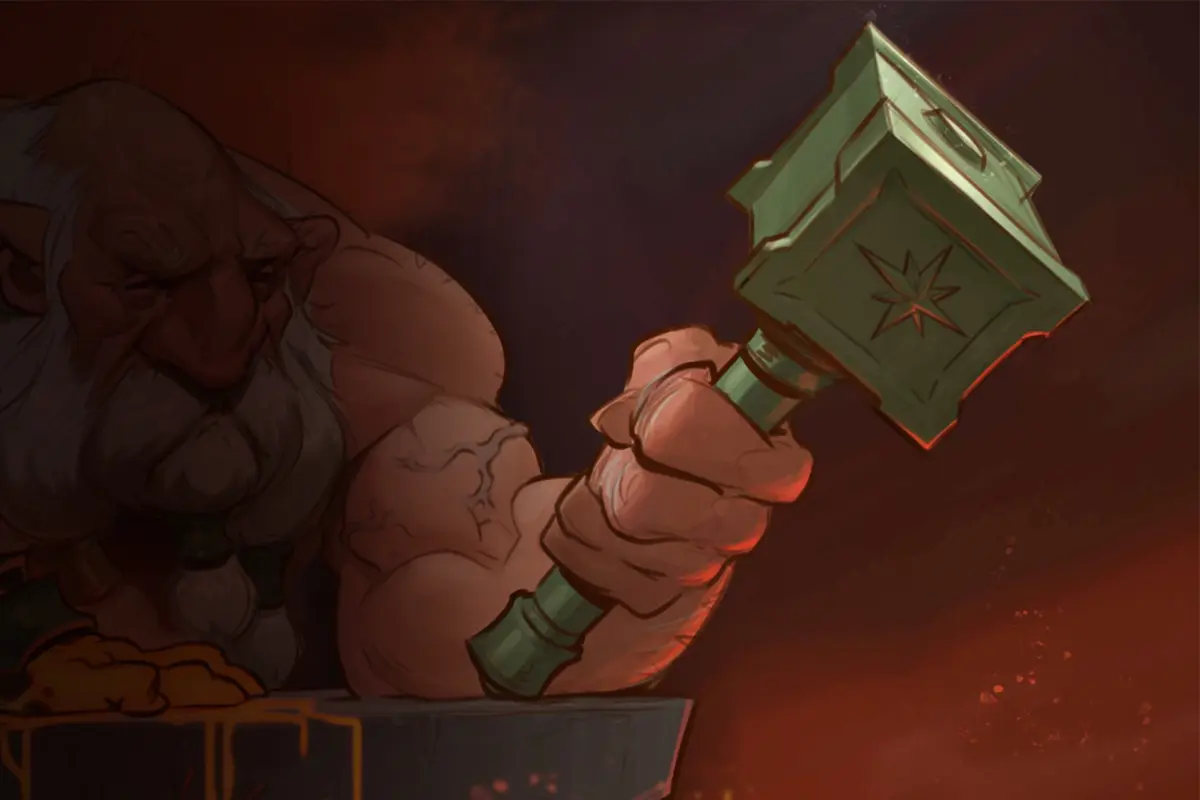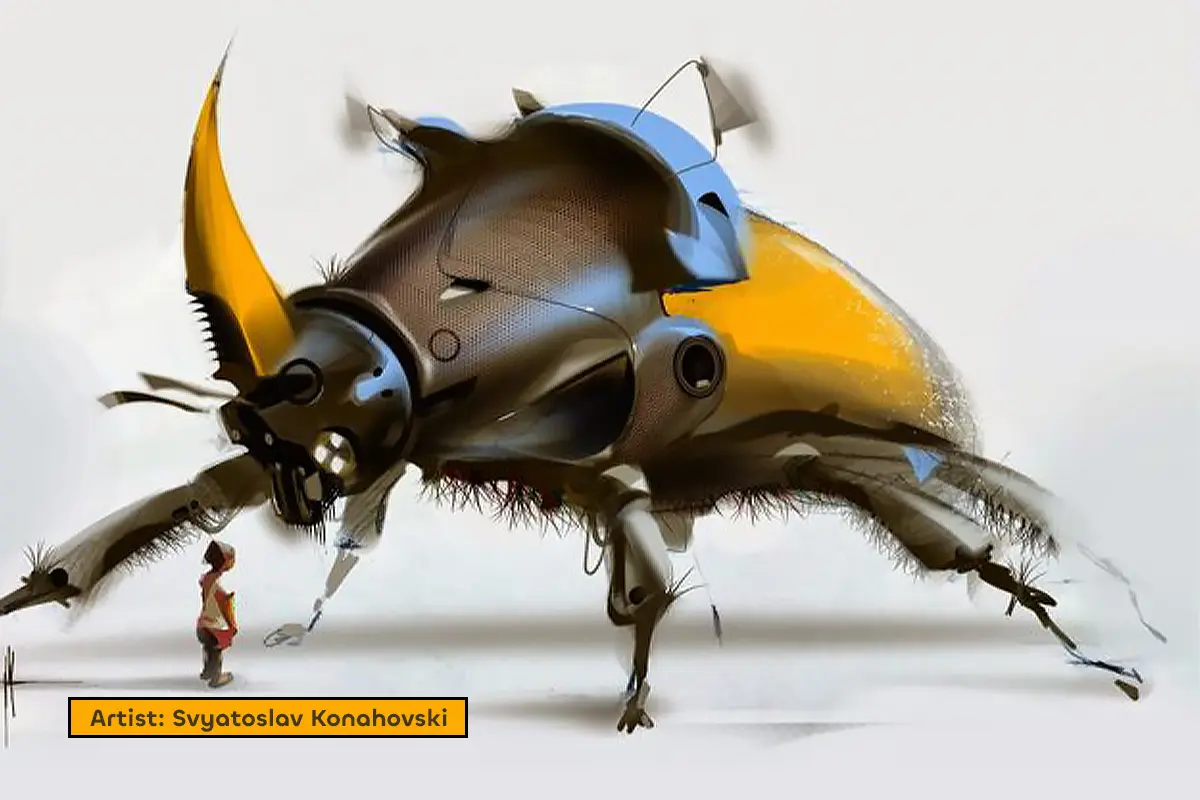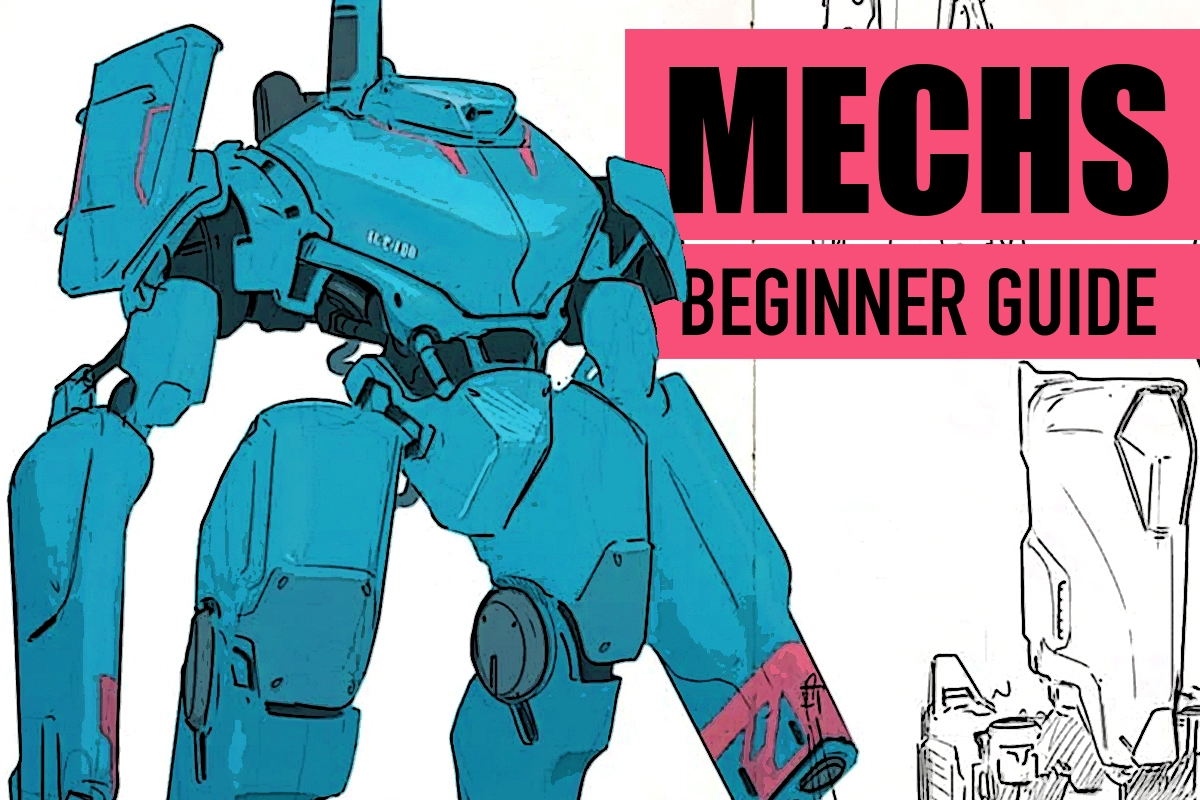
Mastering Mech Design: A Step-by-Step Guide for Beginner Artists
Introduction
When I first started drawing mechs, I’ll be honest—it felt completely overwhelming. The intricate details, the mechanical parts that had to make sense, and the sheer scale of these designs made me question if I’d ever get the hang of it. But what I’ve realized over time is that creating mechs doesn’t have to be intimidating. In fact, it can be one of the most rewarding art forms because it allows you to combine creativity, technical skill, and storytelling all in one.
In this guide, I’ll share the step-by-step approach I’ve used to go from messy sketches to designs I’m genuinely proud of. Whether you’re just starting out or looking to refine your process, I hope these tips will inspire you to bring your mech designs to life.
Step 1: Be Bold
One of the biggest lessons I’ve learned is to start simple. Early on, I would jump straight into details, and my designs would end up looking chaotic or unbalanced. Now, I always start with a good graphic shape. Something that feels pleasing to the eye and balanced in its composition. Then I try to recognise basic forms like (manipulated) cubes, cylinders, or spheres. These forms help me block out the mech’s proportions and overall posture before adding complexity.
For example, if I’m designing a combat mech, I might start with a humanoid-like silhouette and simple, easy-to-read shapes that give a sense of power and stability. These shapes act like a blueprint, giving me a strong foundation to build on.
Trust me, when you start with graphic shapes and some basic structure, the rest of the process becomes so much easier.
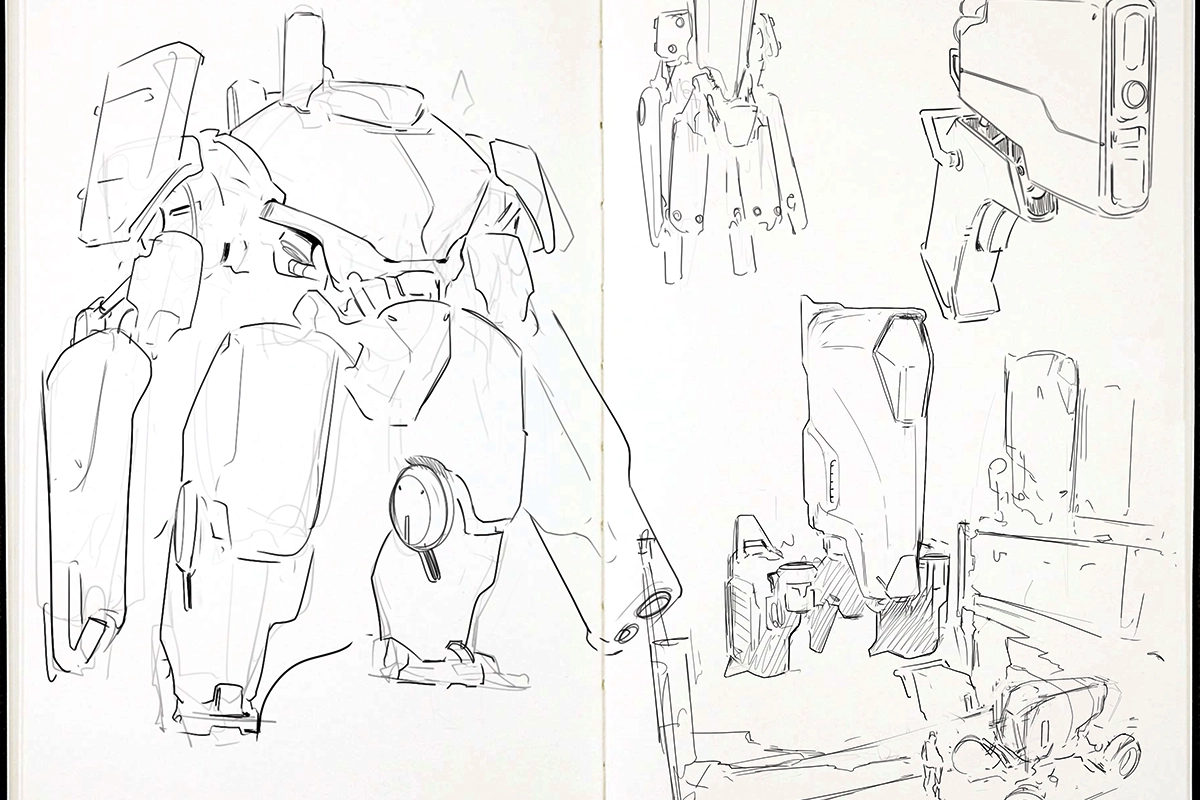
Never be afraid to be bold with your shapes
Step 2: Function as a Design Hook
When starting to learn how to draw mechs, one of the main struggles is that you don't necessarily think of a goal or story for your mech. But it's far better to start considering that a mech isn’t just a collection of parts; it’s a character in its own right. When you design, try to ask yourself: What is this mech’s purpose? Who built it, and why? Is it a battle-worn warrior, or is it a sleek, cutting-edge prototype?
Below you can see examples of how Jonas Minnebo (Artwod tutor) explores the functionality of his mech through various little sketches. Trying to find ideas of its functionality and its overall utility. This is similar to a character call-out sheet, but it's done before the final design. It's more like 'thumbnailing the functionality of your mech' so you can be more confident going forward with the details.
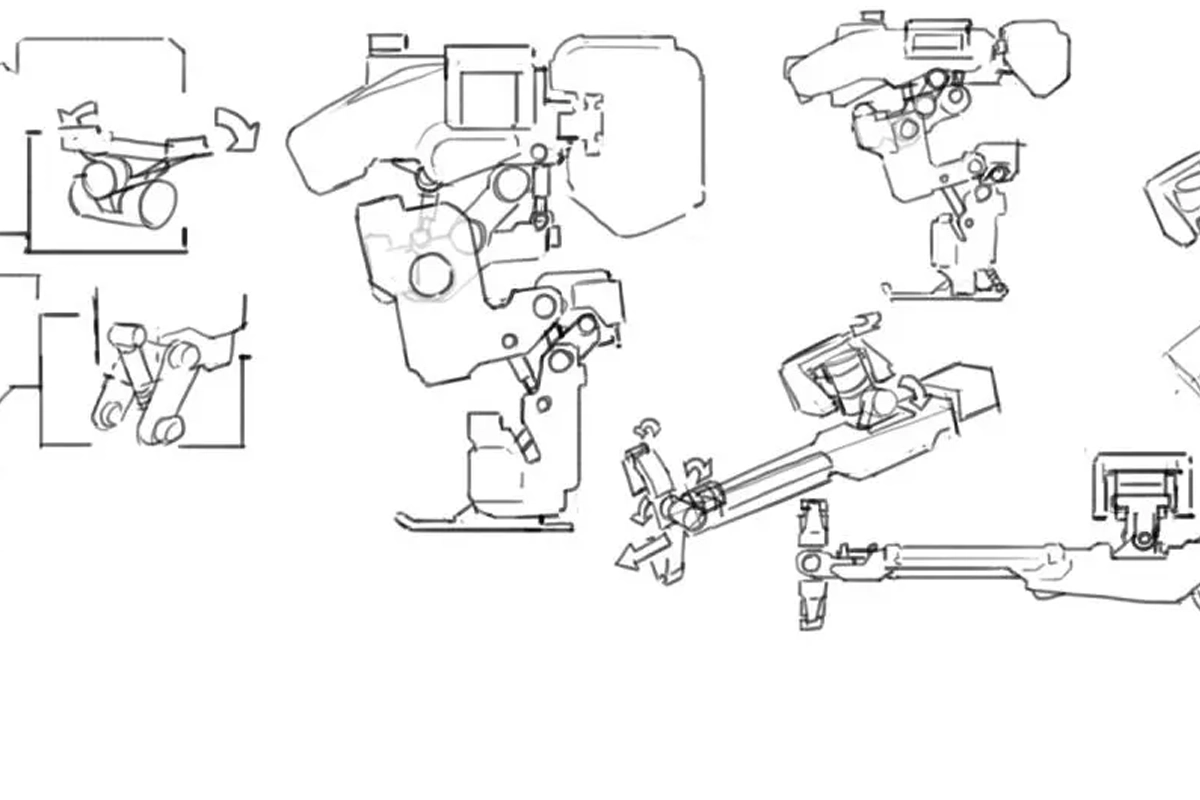
Example from Artwod Mech Design lesson
Step 3: "Cheating" Mechanical Components
This is where things get really fun. Once I’ve got the basic form, I start layering in mechanical details and functionality. I think about how the mech would actually move.
- What parts need to move?
- Where joints would help make it move?
- How does it stay balanced?
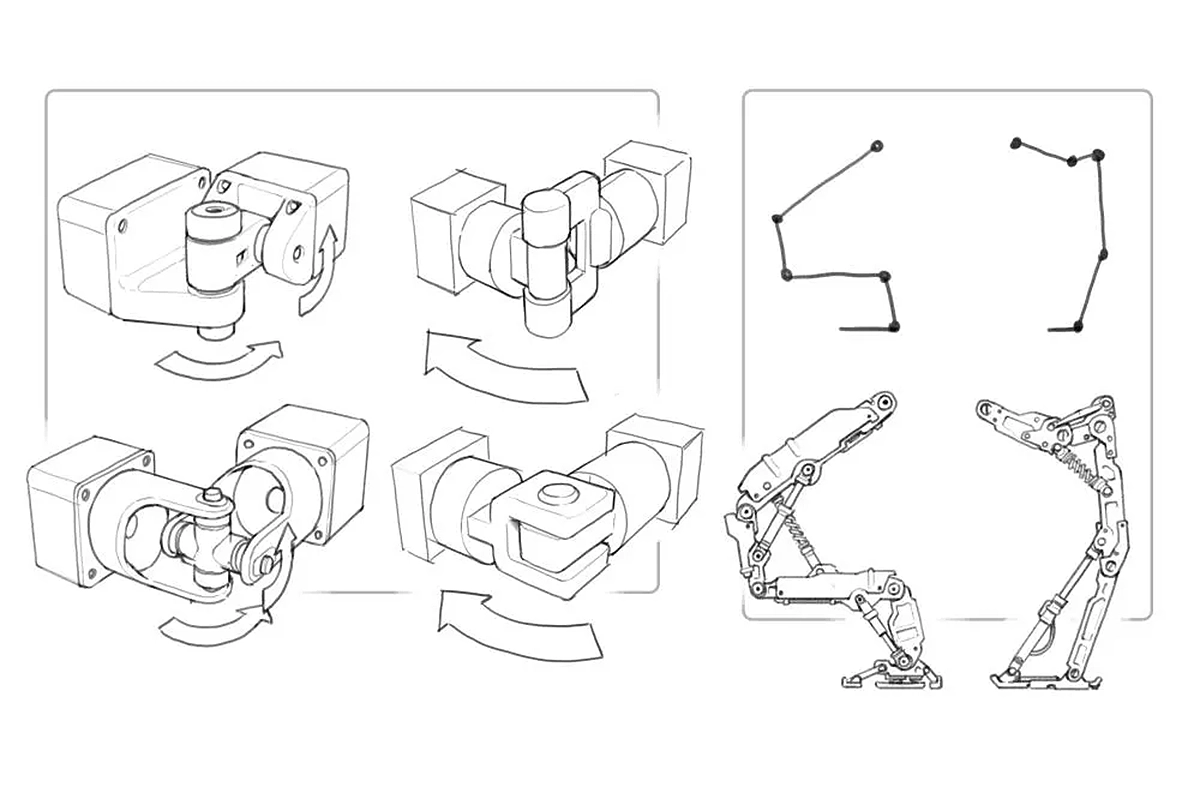
Fundamentals of mechanical parts from Artwod Mech Design lesson
Step 4: Aesthetic Build
Now that you've got your functional part and your story, you still need to consider an aesthetic. You see, the same mech with the same functionality and purpose can still exist in vastly different settings. And this is where reference will be your friend! In order to create a convincing and coherent design, you must use reference to your advantage to build a mech that suits the era or world in which you intent to use it. The two images below are a fantastic example of two identical mechs in a completely unique setting and therefor having a completely unique aesthetic.
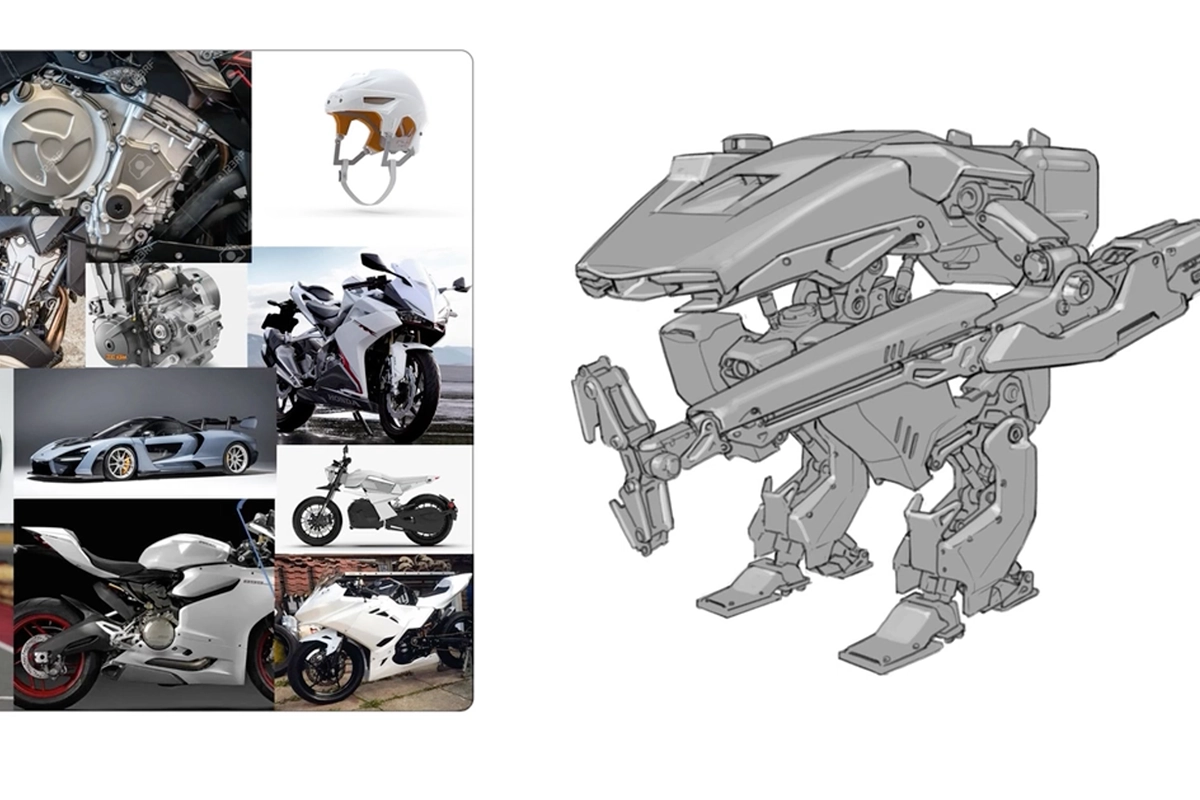
Mech with aesthetic A
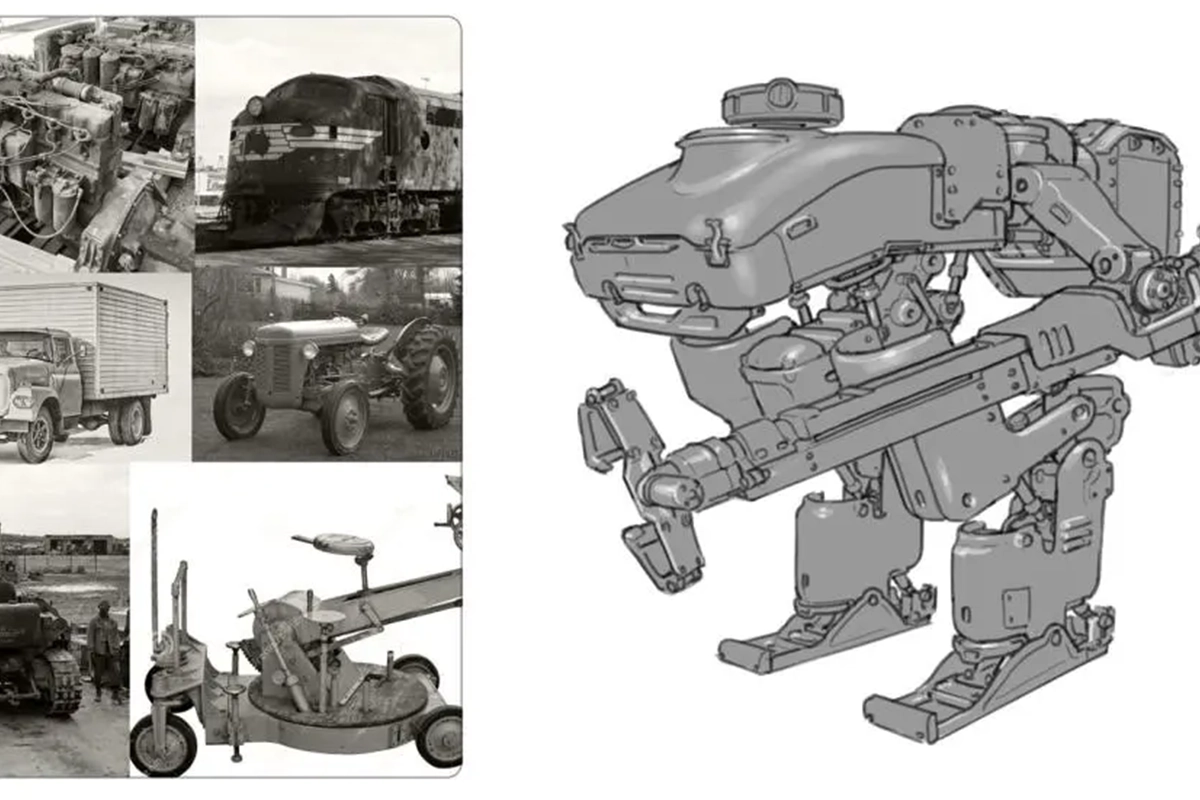
Identical Mech with aesthetic B
Conclusion
Designing mechs might feel overwhelming at first, but with the right approach, it can be a very exciting and rewarding aspect of drawing. Start with simple shapes, think about functionality, "cheat" mechanical parts to guide your choices and build a coherent aesthetic language using great reference.
I’ve come a long way since my first clunky mech sketches, and I owe much of that progress to Jonas Minnebo's insightful tips and creative philosophy. If I can do it, so can you. So grab your pencil, start simple, and watch your mechs come to life!
